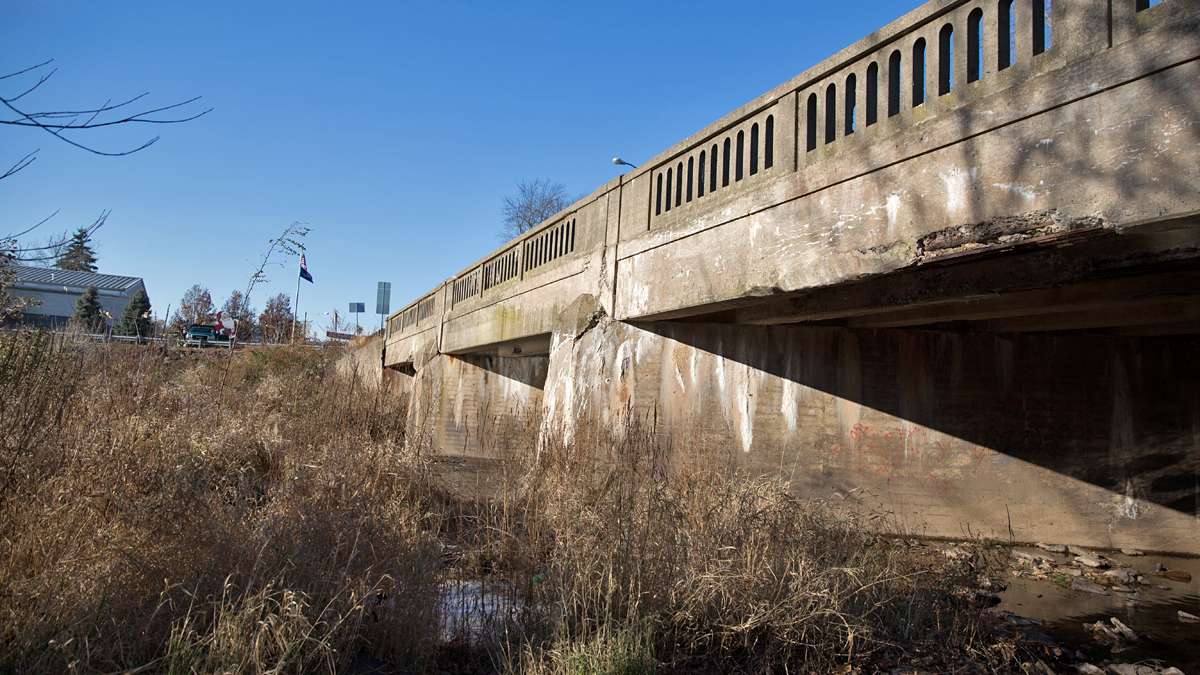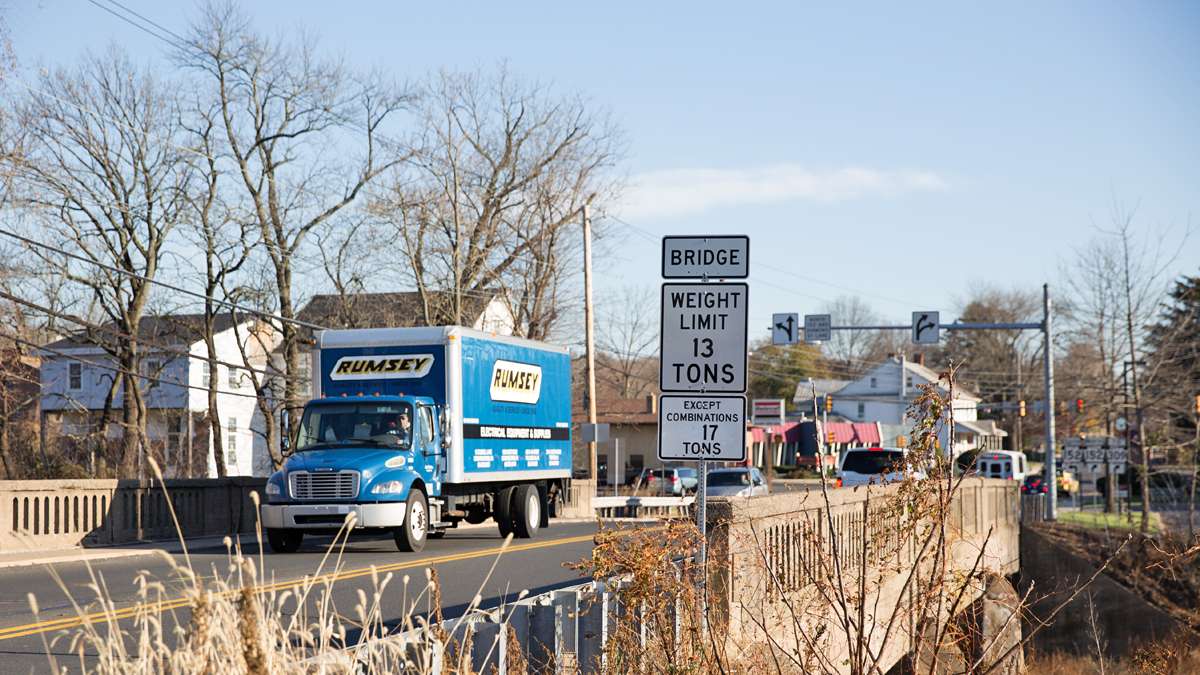The state of Pennsylvania’s bridges, Part 1: How are they holding up?
ListenPennsylvania has a higher percentage of structurally deficient bridges than any other state. But what does that mean? Are the bridges unsafe?
This is the first story of our three-part series on the state’s bridges.
If you drive in Pennsylvania, you’ve probably crossed a structurally deficient bridge. Maybe you’re driving over one right now.
Pennsylvania has more than 30,000 bridges. Some span rivers, like the Ben Franklin Bridge in Philadelphia, and others are much smaller, crossing rural creeks and highways. More than 6,000 of these bridges are structurally deficient. (We put together an interactive map of the state’s structurally deficient bridges.)
You might think that means the bridges are on the verge of collapse. Engineers say that’s not the case.
“Structurally deficient bridges are not unsafe,” says Ehsan Minaie, project manager at the engineering firm Intelligent Infrastructure Systems. “It’s just a technical term that engineers use to categorize specific bridges and highlight them for monitoring, for repair, and sometimes for replacement.”
Inspectors monitor the state’s bridges at least every two years. Minaie says if a bridge is safe, but it needs repairs, it might be given a weight limit to slow the deterioration. If it’s unsafe, it’ll be closed.
Ironically, those weight restrictions and closures can cause problems, even threaten public safety.
Life and Death
When the Sellersville Fire Department gets a call about a fire on the south side of town, Fire Chief Ray Brennan has to decide how to get there.
The fastest route is over the Main Street bridge. But the department’s 32-ton fire truck can’t legally cross the bridge, which PennDOT has given a 13-ton weight limit.
Fire Chief Ray Brennan says the truck has to take a detour that can delay firefighters by up to eight minutes. As a rule of thumb, the department figures that “every minute [a] fire doubles in size,” Brennan says. “Even two minutes is critical, so eight minutes can be dire.”
The department is applying for a permit that would allow its fire truck to cross the bridge. PennDOT says it probably won’t grant the exception because the truck is too far over the weight limit.
Brennan says he knows it’s illegal and he worries about weakening the bridge, but he has occasionally told the truck’s driver to go over the bridge anyway. And he’d do it again.
“We have an elementary school on the south end of town,” Brennan says. “If there’s a fire in the school, do I make the choice to tell the [truck] to come across the bridge or go around? Personally, my kids go to that school so [if that happens, the truck is] coming across the bridge.”
Fire departments in Scranton, Perkasie borough, and Ottsville also say they’re cut off from residents by a weight-restricted bridge.
Daily Annoyances
Bridge restrictions can also be an inconvenience, making it hard for people to get around.
Dave Melchiore is a computer programmer from Springfield. His parents live in Newtown Square, a township where residents can’t drive over a main road because of a closed bridge.
Melchiore says that last year, his parents were driving home from church in a snowstorm. Because the bridge was closed, “they were forced to take the back ways, which are very steep and very treacherous in the snow,” he says. “They actually got stuck and had to leave their car abandoned on the side of the road.”
His parents got a lift from a neighbor and recovered their car later. But winter’s on its way again, and the bridge won’t be fixed until next summer. (The town says the closure is inconvenient, but argues that most roads would be treacherous in a snowstorm.)
Melchiore says bridge closures like this one have ripple effects beyond his community. “When you have these sorts of basic infrastructure crumbling around us, it impacts our economy, our productivity, our ability to get things done and be competitive as a nation.”
Trade groups, local officials, and PennDOT say restrictions can force commercial trucks to take longer routes, costing businesses time and money.
But PennDOT says it has done the best it can with the funding it has. The agency has repaired more than 1500 bridges since 2008. And it’s repairing more, thanks to the transportation funding law signed by Governor Corbett last year.
Construction on the Sellersville bridge won’t be finished until summer 2018.
Until then, Chief Brennan says he’s crossing his fingers.
This is the first in a three-part series on the state’s bridges. In our second story, we talk about a new program that will allow the state to replace its bridges faster. In the third part, a look at how bridge safety is monitored.
We used the Public Insight Network, a portal that allows readers to share their experiences with our newsroom, in reporting this story.
WHYY is your source for fact-based, in-depth journalism and information. As a nonprofit organization, we rely on financial support from readers like you. Please give today.







